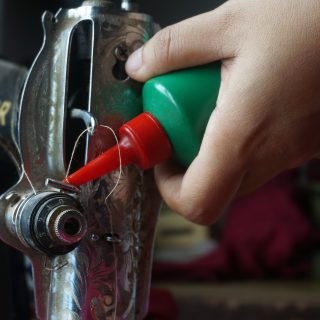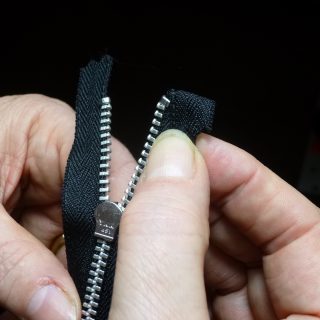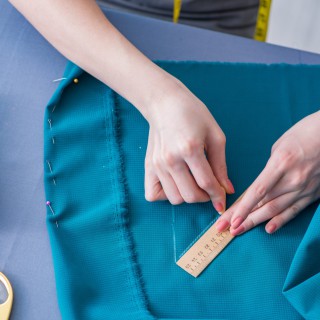Iron-on patches have become one of the coolest ways to personalize old (and new!) clothes and accessories. These days, many young folks jazz up their favorite pair of jeans, t-shirts, jackets, shoes, backpacks, and purses with iron-on patches in an attempt to extend their lifespan.
While applying an iron-on patch is pretty foolproof, removing it can be a bit tricky, especially if you don’t want to ruin your garment. Luckily, there are 5 effective methods for taking off iron-on patches from clothing, each of which requires readily available items and can be tried at home. Read on to learn how you can get rid of iron-on patches without having to end your love affair with your favorite apparel.
Method 1: Apply Heat With an Iron
Applying heat with an iron is one of the most commonly used solutions for iron-on patch removal. As you may already know, iron-on patches are applied with a heat-set adhesive. The glue must be softened to release the patch from the garment. Here’s what you need to do:
Step 1: Make sure your clothing item can take the heat
Before grabbing your iron, you need to check to make sure your garment can survive the heat. To see whether this method is suitable for your item, do a little test. First, choose a small, unnoticeable part of the piece of clothing and cover it with a thin dish towel or wax paper. Next, heat your iron and press it down on the chosen area for around 15 seconds. Finally, remove the iron and see the results. If the clothing item is discolored or otherwise damaged, you might want to pick another method. If everything seems okay, proceed to the next step.
Step 2: Cover the iron-on patch
First, make sure the cloth part of the iron-on patch is exposed. Then, cover the patch with a thin fabric towel (cotton is a good choice) or a sheet of wax paper. Whichever option you decide on, keep in mind that it needs to be clean and it shouldn’t contain any ingredient that can melt into your garment.
Step 3: Preheat the iron & iron the patch
Now it’s time to set your iron at its highest heat setting and make sure its steam function (if it has one) is off. The latter is important because this method requires dry heat. Once your iron reaches the desired temperature, press it down on the covering you’ve placed over the patch in step 2, and remove both the iron and the covering after about 15 seconds. This is when you should check the glue. If the heat has softened it, proceed to step 4. If the adhesive appears intact, repeat this step until it melts.
Step 4: Peel off the patch
This is the most enjoyable part of the entire process (at least for me). Once the glue is all molten and sticky, you can try to peel off the patch by lifting up and pulling one of its edges. To avoid burning yourself with hot glue, it’s smart to do this part with the help of a butter knife or, even better, tweezers. Use a butter knife by slipping it between your clothing item and the patch. Then, lift it up and peel off the patch with your fingers. Tweezers are the preferred option here because they can grip the patch well. Bear in mind that large iron-on patches can be difficult to peel off and you might need to do it section by section. Patience is key!
Method 2: Use an Adhesive Remover
If you want to take off iron-on patches from delicate clothing, the glue remover method might be ideal for you. Follow these steps to execute it successfully:
Step 1: Buy a fabric-safe glue remover
For the best results, opt for a xylene or orange oil-based adhesive remover. To make things easier and more convenient, purchase a liquid-based glue remover in a spray bottle like the Goo Gone Spray Gel Adhesive Remover.
Step 2: Test the adhesive remover
Even though many adhesive removers available on the market are fabric-friendly, testing them is always smart. First, pick a small, unnoticeable area on your piece of clothing (a small corner of the fabric is a great choice) and apply a small amount of the product to it. Make sure the glue remover has entered the fabric of your clothing item before washing it off. Once you rinse off the adhesive solvent, check for discoloration or any other kind of damage. If the spot you tested on is in good condition, continue to the next step.
Step 3: Turn your garment inside out
To treat the iron-on patch you want to get rid of with a glue remover, you need to have access to the area bonded to the patch. Turning your item inside out will expose this area and allow you to proceed to step 4.
Step 4: Apply the glue remover
Cover the entire area behind the iron-on patch with the adhesive remover you’ve picked. Spray, pour, or squirt the remover on the back of the patch until you work it in. You can do this with a clean cotton ball or a towel. It’s important to let the glue remover work its magic for at least 3 minutes or as long as its manufacturer recommends. If this doesn’t do the trick or there seems to be a stubborn spot, apply another round of the glue solvent or go with another brand. Do this step in a well-ventilated room.
Step 5: Peel off the patch
It’s now time to turn your garment right-side-out, lift up one of the edges of the patch, and pull it back. If you’re having a hard time peeling the whole patch away, consider cutting off the already-peeled-off parts with a pair of sharp scissors so you can deal with the rest of the patch more easily. This, of course, means that you won’t be able to reuse the patch.
Method 3: Go With a Hair Dryer
The hair dryer method is another popular at-home patch removal solution. The process is quite simple and effective.
Step 1: Set your hair dryer at the highest temperature
To soften the adhesive and loosen the patch, you need to apply highly heated air to the area underneath the patch. The higher the temperature, the better the results.
Step 2: Heat the glue
Blow-dry the area at the back of the patch until the adhesive heats up and starts softening. Do this in sessions that last a few seconds each.
Step 3: Peel off the patch
If you’ve successfully completed the previous steps, separating the iron-on patch from your garment will be extremely easy. If you have to use force to peel the patch off, chances are you need to repeat the blow-drying part of the process.
Method 4: Use a Nail Polish Remover
Don’t want to spend money on a product made specially to remove glue? Don’t worry, you can achieve satisfactory results with your nail polish remover if it contains acetone (a powerful ingredient that breaks down glue). Here’s what you need to do here:
Step 1: Test your nail polish remover
To avoid ending up with a permanently stained piece of clothing, you need to test your nail polish remover by applying a drop or two to a small area. If this doesn’t damage your item, you’re safe to proceed to the next step.
Step 2: Apply the nail polish remover
Immerse a cotton ball in your nail polish remover and use it to smudge the edges of the patch until the adhesive softens. Repeat this step as many times as needed to loosen the patch, but be sure to use new cotton balls for better results.
Step 3: Peel off the patch
Pull off one of the iron-on patch’s edges and dab it with a fresh acetone-soaked cotton ball. Do this until the patch comes off completely.
Method 5: Treat the Clothing Item With White Vinegar
Many folks like cleaning with white vinegar. If you’re one of them, you’ll be glad to learn that you can get rid of unwanted iron-on patches with a simple yet effective white vinegar solution. Here’s how:
Step 1: Prepare the solution and soak the item
Mix a 1:1 ratio of water with white vinegar—you can go with 2 cups of each if the piece you want to treat isn’t very large. Then, soak and leave your garment in the solution overnight.
Step 2: Remove the item from the solution and peel off the patch
The next morning, take out your clothing piece and examine it. The edges of the patch should be loose and easy to lift. If that’s the case, try to remove the patch using a butter knife or a spoon.
How to Remove Iron-on Patch Glue
The methods I’ve explained above can help you release an unwanted iron-on patch from your clothing, but not all of them can remove the remaining glue. If you’re dealing with a glue residue after you’ve treated your item with an adhesive remover, launder it and see if this will eliminate the glue completely.
In case you went with a different method, add a small amount of a store-bought glue remover to the residue and massage it with a rag. If you’re after a more natural solution, make one yourself by mixing baking soda with coconut oil (a 2:1 ratio) and adding a few drops of orange essential oil to the mix. Let the solvent do its job for around 60 seconds. Lastly, wash your garment as soon as possible the way you usually do, but don’t throw it in the dryer unless the remaining glue is completely removed. You might need to repeat the process a few times to save your item and continue wearing it.
Final Words
Personal styles are allowed to change. If you no longer feel a particular iron-on patch helps you express yourself, it’s probably time to get rid of it. All of the above-mentioned methods can help you achieve this, so feel free to pick whichever suits you best.
Last update on 2025-07-15 / Affiliate links / Images from Amazon Product Advertising API






